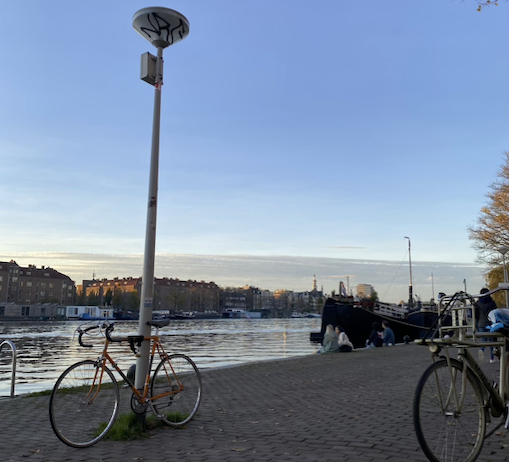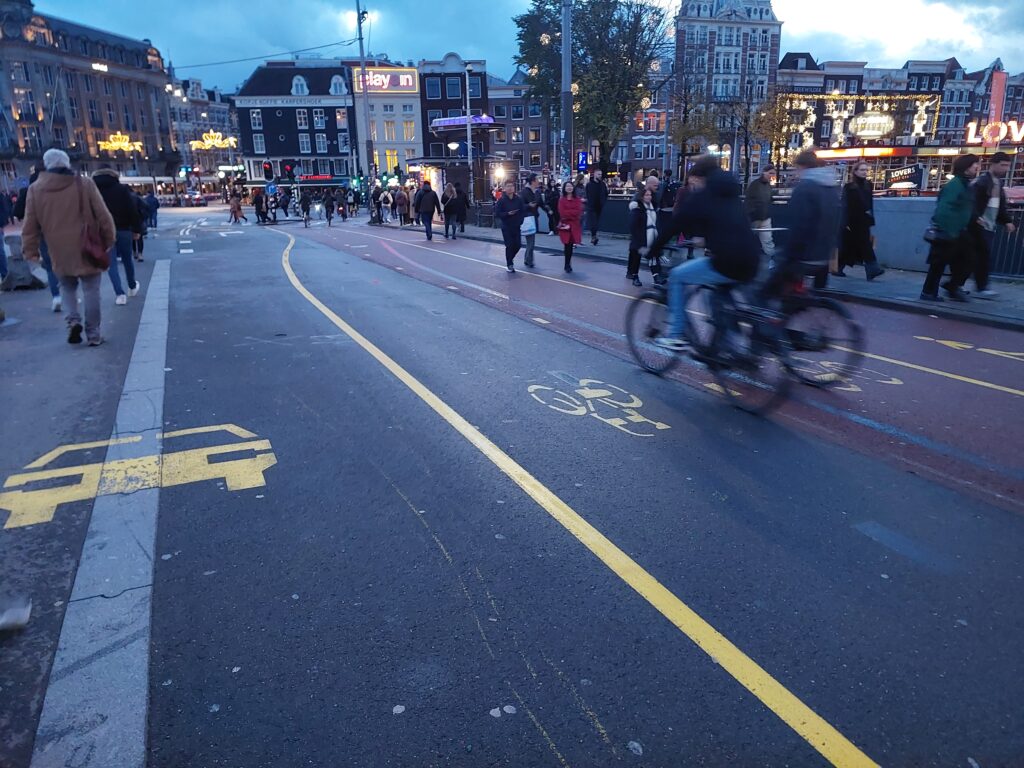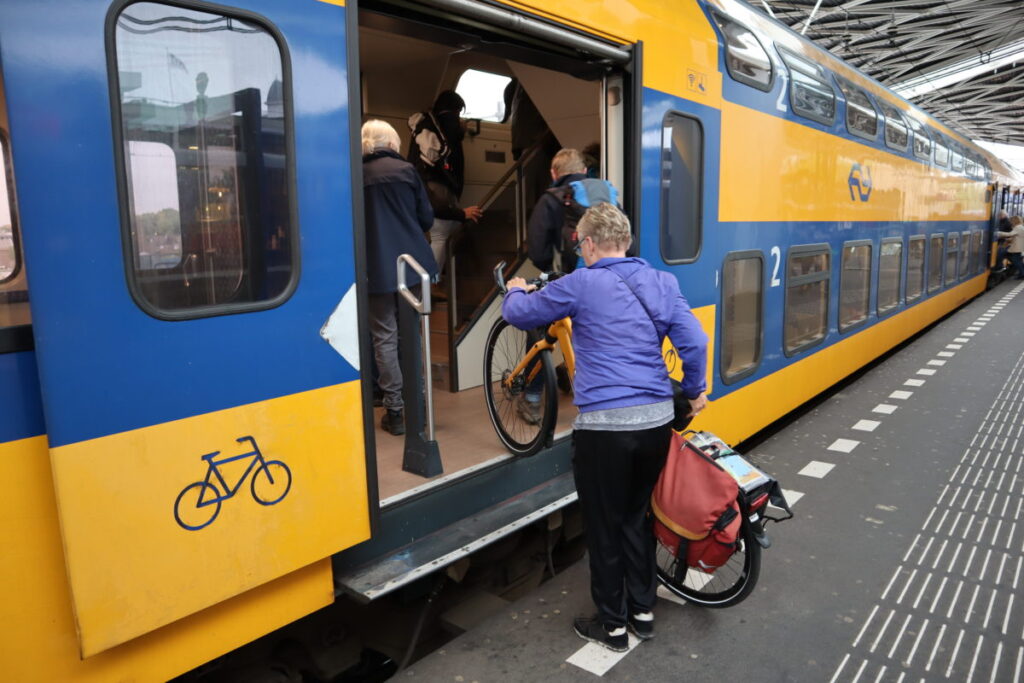Inés Alveano-Aguerrebere Twitter | Email
Selected final essay, published 2 September 2020
Feminist, mother, pedestrian, urban cyclist, transit rider, driver, planes/trains passenger. Md in Public Health and PhD in Policies. Ines likes to think of herself as a “rational” consumer. She is passionate about the links between the shape of cities and social well-being. Member of Liga Peatonal in México.
Unraveling the Cycling City MOOC on Coursera
I enjoyed the Unraveling the Cycling City MOOC. My key takeaway is that together with high quality infrastructure, car and fuel taxes can encourage urban cycling, but mixed land use policies must be established at the same time.
In Mexico, there are some non-governmental groups that have worked towards developing a cycling culture since around 2005, but their achievements are very limited. There are entrenched prejudices against a person on a bike – if someone cycles, it is perceived it is because he or she does not have a car. I believe we can blame the car industry; its persuasive advertisements and lobbying towards car-centered cities results in the public perception that car ownership is a sign of prosperity.
Dispersed cities and unsafe road conditions for vulnerable users (tight sidewalks, no/poor cycling infrastructure) are some of the outcomes of our “developing country”, which has tried to build its cities centering mobility on private cars. People on foot, bike or public transit (around 75% of the population), suffer on a daily basis, and not only face inconveniences like discomfort, long travel times, fear of assault and high costs, but also risk of death or serious injury. No wonder people dream of owning a car! “Solutions” to pedestrian safety have also been designed from a car-centric perspective: building “pedestrian bridges” that force them to walk eight times the distance to cross a street or to climb stairs, while the underlying aim is to keep cars moving fast. I think that trying to solve problems without looking at the big picture IS a problem in itself.

Creutzig (2014) found that low prices of gasoline induce a dispersed city and make it harder to see the bike (and other modes) as a means of transport. As an ‘oil producer’, this has been the scenario in Mexico for decades, and our cities have expanded seven times faster than the population.

It is clear to me, that car and fuel taxes (“sticks”) can encourage the use of other modes, like cycling, as seen in places such as Copenhagen (Boge, 2006). Although, a call for such taxes in Mexico would likely be unpopular politically speaking. Most Mexicans don’t like paying taxes because they think the government is corrupt and/or wastes money on unnecessary things.
Bertolini & le Clercq (2003) state that: “… multidimensional solutions, that is, solutions that succeed in serving several goals at the same time, will invariably be the ones with the greatest chance of success”. This concept is very important because some “solutions” to problems such as housing, can and have done harm to other spheres (Libertun de Duren, 2017), like public health, social interaction, and mobility. Policies in Mexico have encouraged single land use, making it more difficult for individuals and families to access goods and services. Contemplating the city (and urban development) as a solution to public health, pollution, housing, accessibility, economic prosperity, and equality is fundamental. For instance, the need to travel (especially distances not feasible for walking or cycling) can be reduced, if amenities and services are provided, in the space where people need and want them (“carrots”).
In addition, mixed-use land and higher density should come together with gender-oriented transport planning. Women’s trips tend to be different from men’s (at least here in Mexico) – we are the “default” persons in charge of the kids or the elderly, and the groceries etc, and our travel involves “chained” activities. The latest “origin-destination survey” showed that in Mexico City, 75% of men trips are direct to and from study or work, while for women, such trips are just 50%. Cycling infrastructure should be planned for the diverse needs of women and other groups with different needs and abilities.

In spite of the obvious conditions that make car use favorable, in Morelia (my city, with around 1 million inhabitants) transport mode share is 31% walking, 40% public transit, 25% car, 1.1% cycling, with the rest taxis and ‘other’. We can consider this a “healthy” modal share, and should work with carrots and sticks, not only to preserve it, but to improve travelling conditions for 75% of the population and further facilitate cycling. As Brent Toderian states: “When you design a city for cars, it fails for all, including drivers. When you design a multimodal city it works for all, including drivers”.
Questions that for me remain unanswered, is how to achieve change when stakeholders still think that the automobile equals progress, and that the best way to solve congestion is building more car infrastructure; when housing developers still want to build homes far from the city (even though we now have five million abandoned houses like this around the country); when public institutions – even hospitals – are built in the middle of nowhere, just to increase land value; and when car advertisements promote the lie that owning a car is better than anything and will solve all your – unrelated to mobility – problems.
Another incognita is how to accomplish “fairness”. How do we ensure that access to public space is well-balanced, so that all users have a high quality experience (whether staying or passing by), where high quality is related to safety, comfort, amusement, temperature, noise…and results in a willingness to be there…
Sources:
- Bertolini, L., & le Clerq, F. (2003). Urban development without more mobility by car? Lessons from Amsterdam, a multimodal urban region. Environment and Planning A, 35(4), 575-589.
- Boge, K. (2006). Votes Count but the Number of Seats Decides. A comparative historical case study of 20th century Danish, Swedish and Norwegian road policy, 451. Norwegian Schoold of Management.
- Creutzig, F. (2014). How fuel prices determine public transport infrastructure, modal shares and urban form. Urban Climate, 10, 63-76.
- Libertun de Duren, N. (2017). Banco Interamericano de Desarrollo. Recuperado el 03 de 07 de 2020, de La carga de la vivienda de interés social
- Oldenziel, R., & A de la Bruheze, A. A. (2011). Contested Spaces: Bicycle Lanes in Urban Europe. Transfers, 1(2), 31-49.
- SEDESOL. (2002). Estudio integral de vialidad y transporte urbano para la ciudad de Morelia – 1ra etapa. Morelia: SEDESOL.



